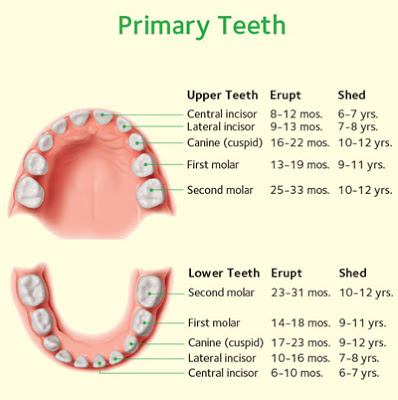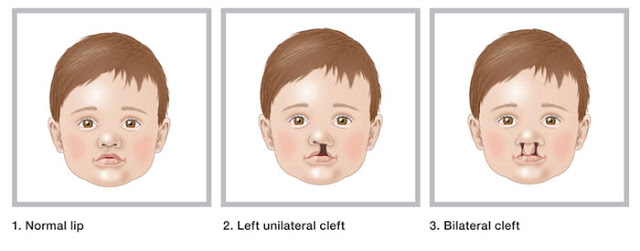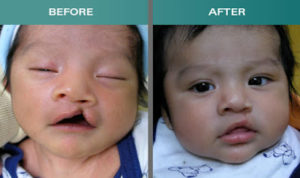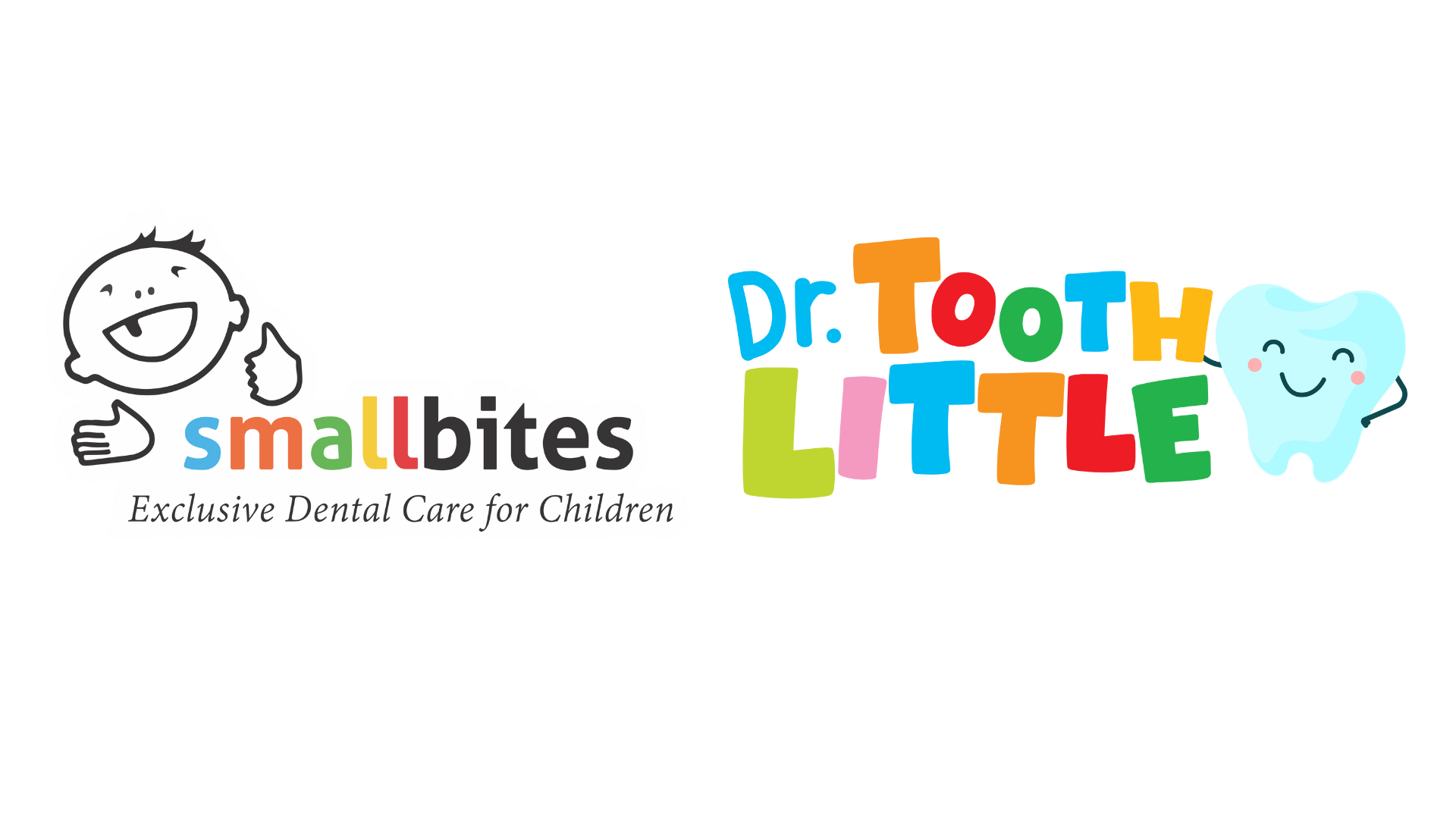Teeth are important accessories that develop in humans, much before they are born, and depend entirely on how well they are used and looked after. In children, tooth development begins in the womb, but they appear much later, when the baby attains the age of 6 to 9 months. The complete set of 20 primary teeth in children (called milk teeth or baby teeth) comes in usually by the age of 3 years.

Unlike the normal healthy growth of teeth in children and milestones that occur at specific ages, children with developmental disorders of the mouth do have a delayed or impaired growth of teeth.
What is Cleft Palate?
Cleft Palate is one such congenital disorder of the mouth where the cleft occurs in the lip, gum (alveolus) or palate/roof of the mouth resulting in a variety of dental problems. Children are often born with this defect, and the anomaly may affect the way their teeth develop, affect speech and also eating.

Whare are the different types of Clefting?
Cleft palate may affect the number of teeth, their size, shape, and also position of both the baby and permanent teeth. The teeth that are most commonly affected by the clefting process are those surrounding the area of the cleft, mainly the lateral incisors. Clefts occur between the cuspid (eye tooth) and the lateral incisor. In some cases, it is also seen that the lateral incisor may be entirely absent. In other cases, there may be a “twinning” of the lateral incisor, so that one is present on each side of the cleft. In a majority of the cases, the incisor may be present but poorly formed with an abnormally shaped crown and/or root. Finally, around the area the area of the cleft, the teeth may be displaced, resulting in them coming up in abnormal positions when permanent teeth erupt.
As it is often seen, although a cleft palate is a visible albeit minor facial deformity, not much attention is given to the way it may affect teeth growth or placement, which in turn can result in biting and swallowing problems in children and also speech issues at a later stage in life.
It is important to evaluate the cleft and take any preventive measures to ensure that this anomaly doesn’t affect the child in the long run.

HOW DOES DENTAL CARE DIFFER IN CLEFT PALATE
There is no difference between a regular child and someone with cleft palate, except that these children require a preventive and restorative care that is more specific than the others.
The evaluation by a paediatric dentist for these children must start early, because of the malformed, missing and mis-positioned teeth, and accompanying problems that these children are sure to face.
EARLY DENTAL CARE FOR CLEFT PALATE
 Following a regular routine of cleaning, good nutrition and fluoride treatment, children with cleft lip or palate can have healthy teeth. Besides this, the following will help,
Following a regular routine of cleaning, good nutrition and fluoride treatment, children with cleft lip or palate can have healthy teeth. Besides this, the following will help,
- Appropriate and regular cleaning with a soft, -bristled toothbrush should begin as soon as teeth erupt.
- First visit to a paediatric dentist must happen on completion of one year of age, or even earlier
- Oral hygiene instructions and preventative counselling prescribed by a dentist must be regularly followed
- Treatment prescribed may differ from one child to the other. Some may need only preventative care while others may require filling or tooth removal
WHAT ARE THE TREATMENT OPTIONS AVAILABLE FOR CLEFT PALATE ?
ORTHODONTIC CARE FOR CLEFT PALATE
 Even before the teeth erupt, orthodontic intervention will look into the development and growth of the jaws, thereby focusing entirely on facial growth. This is done to prepare the mouth to accommodate the natural growth of the teeth. If the child’s upper teeth for example, don’t fit together or occlude with the lower ones, the dentist can suggest an early treatment to correct this. Later as the natural growth of teeth occurs, plans can be made for the child’s short term and long term dental development.
Even before the teeth erupt, orthodontic intervention will look into the development and growth of the jaws, thereby focusing entirely on facial growth. This is done to prepare the mouth to accommodate the natural growth of the teeth. If the child’s upper teeth for example, don’t fit together or occlude with the lower ones, the dentist can suggest an early treatment to correct this. Later as the natural growth of teeth occurs, plans can be made for the child’s short term and long term dental development.
SURGICAL CARE FOR CLEFT PALATE
There are instances when a bone defect has given rise to the cleft palate, which can cause resultant mis-positioning of teeth. At such times, surgical intervention in conjunction with dental care can be done, where reconstruction of the cleft defect is accomplished by a bone graft performed by a surgeon. Surgical care to correct the cleft defect is to be done under the supervision of a paediatric dentist and only when absolutely necessary.
At adolescence, medical care can be provided in such a way where an orthodontist and surgical dentist can work together to ensure the teeth are aligned and any intervention given appropriately, for them to grow normally.
PROSTHODONTIC CARE
Having tried orthodontic intervention, if it is observed that additional support is required, then a maxillofacial prosthodontist can help, by making artificial teeth and appliances that not just improve the appearances of individuals with cleft, but also aid in speech, and functional requirements like eating. Oral appliances such as “speech bulbs” or “palatal lifts”, help close the nose from the mouth so that speech will sound more normal or a dental bridge can be created to replace missing teeth. In all of this, the dentist ensures that everything comes together to help the child be as normal as possible in speech and eating.
As seen above, the treatment of cleft palate is a co-ordinated effort by a number of specialists brought together by a dentist who can identify and advocate the right course of treatment. This treatment and looking after the development of teeth, has to begin at a very young age, in order to ensure that the child’s speech and oral development progresses as naturally as possible.
Have questions about Cleft Palate? Contact us or fill the form below and we will get back to you at the earliest

